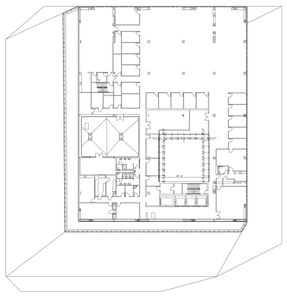
Seattle Central Library
PROGRAM
Central library for Seattle’s 28-branch library system, including 33,700 sqm of hq, reading room, book spiral, mixing chamber, meeting platform, living room, staff floor, children’s collection, and auditorium, and 4,600 sqm of parking.
CONSULTANTS
Arup, Bruce Mau Design, Front, HKA, Hoffman Construction Company, Inside Outside, Jones & Jones, Kugler Tillotson, McGuire, Michael Yantis, Pielow Fair, Dewhurst Macfarlane and Partners, Quinze & Milan, Seele, Magnusson Klemencic, Davis Langdon
CLIENT
Seattle Public Library
BUDGET
US $169.2 M
KEY PERSONNEL
Rem Koolhaas, Joshua Prince-Ramus, Mark von Hof-Zogrotzki, Natasha Sandmeier, Meghan Corwin, Bjarke Ingels, Carol Patterson
MANUFACTURERS
RENSON, Bomel Construction Company, Canron Western Construction, Electrical Systems, Energy Labs, Glazing Systems, Henkel, Mechanical Systems, Metal Framing and Drywall, Miscellaneous Iron & Ornamental Metal, The Erection Company
Text description provided by architect.
The Seattle Central Library redefines the library as an institution no longer exclusively dedicated to the book, but as an information store where all potent forms of media—new and old—are presented equally and legibly.
In an age where information can be accessed anywhere, it is the simultaneity of all media and, more importantly, the curatorship of their content that will make the library vital.
Flexibility in contemporary libraries is conceived as the creation of generic floors on which almost any activity can occur. Programs are not separated, rooms or individual spaces not given unique characters.
In practice, this means that bookcases define generous (though nondescript) reading areas on opening day, but, through the collection’s relentless expansion, inevitably come to encroach on the public space.
Ultimately, in this form of flexibility, the library strangles the very attractions that differentiate it from other information resources.
Instead of its current ambiguous flexibility, the library could cultivate a more refined approach by organizing itself into spatial compartments, each dedicated to, and equipped for, specific duties.
Tailored flexibility remains possible within each compartment, but without the threat of one section hindering the others.
Our first operation was to “comb” and consolidate the library’s apparently ungovernable proliferation of programs and media. By combining like with like, we identified programmatic clusters: five of stability and four of instability.
Each platform is a programmatic cluster that is architecturally defined and equipped for maximum, dedicated performance. Because each platform is designed for a unique purpose, their size, flexibility, circulation, palette, structure, and MEP vary.
The spaces in between the platforms function as trading floors where librarians inform and stimulate, where the interface between the different platforms is organized—spaces for work, interaction, and play.
By genetically modifying the superposition of floors in the typical American high rise, a building emerges that is at the same time sensitive (the geometry provides shade or unusual quantities of daylight where desirable), contextual (each side reacts differently to specific urban conditions or desired views), iconic.
The problem of traditional library organization is flatness. Departments are organized according to floor plans. Each floor is discreet; the unpredictable fits of growth and contraction in certain sections are, theoretically, contained within a single floor.
In 1920, the Seattle Public Library had no classification for Computer Science; by 1990 the section had exploded. As collections unpredictably swell, materials are dissociated from their categories.
Excess materials are put in the basement, moved to off-site storage, or become squatters of another, totally unrelated department.
The Book Spiral implies a reclamation of the much-compromised Dewey Decimal System. By arranging the collection in a continuous ribbon—running from 000 to 999—the subjects form a coexistence that approaches the organic; each evolves relative to the others, occupying more or less space on the ribbon, but never forcing a rupture.


















































